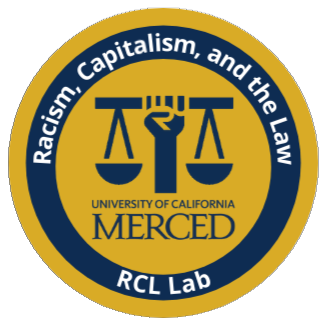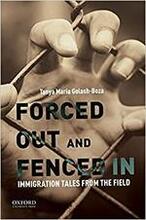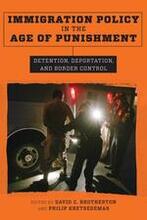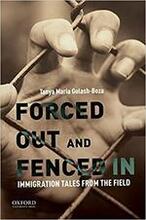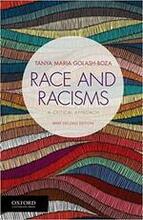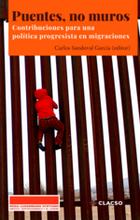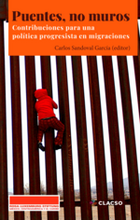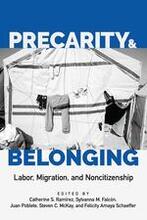- Home
- All
All
This chapter analyses the experiences of isolation, precarity, and resilience of Dominican deportees. The context of reception of persons deported from the USA to Latin American and Caribbean countries is highly dependent on the cultural context and laws of each country. However, recent research has shown that deportees suffer isolation and stigmatisation that has clear effects on their social and labour market reintegration. This chapter, drawn from 46 interviews with Dominican deportees, explores how highly stigmatised individuals with minimal job experience find opportunities in the precarious and informal Dominican labour market. The ability of Dominican deportees to re-integrate is in part due to their ability to access the limited labour market opportunities, as well as through remittances from family members in the USA.
Former President Barack Obama’s administration oversaw three million deportations-far more than any previous President, and more than the sum total of all deportations prior to 1997. President Donald Trump has promised to surpass these record numbers of deportations. With mass deportation constantly in the news, students crave a deeper understanding of how we have arrived at this particular historical moment. This collection of powerful essays-written by leading scholars in migration studies-puts a human face on mass deportation by telling the stories of people bearing the brunt of immigration law enforcement. Each narrative in Forced Out and Fenced In: Immigration Tales From the Field centers on a person or a small group of people and places their story within the broader socio-legal and historical context. The authors weave the relevant historical, political, and socio-legal analysis throughout each essay, yet the narrative remains the most important element in each piece. The book is ideal for courses on immigration in sociology, anthropology, political science, law and society, ethnic studies, Latino studies, history, geography, and American studies.
This chapter considers how biased policing practices, combined with institutional cooperation between immigration and criminal law enforcement agents, influences broader trends in deportation. Deportation laws in the United States are race- and gender-blind, but their implementation is not. Ninety-four per cent of interior removals involve men, even though women account for 47 per cent of unauthorized immigrants in the United States. And, 88 per cent of interior removals involve people from just four countries: Mexico, Guatemala, Honduras, and El Salvador, even though nationals from these countries only make up 66.3 per cent of unauthorized migrants. An analysis of how deportations happen that puts together on-the-ground practices of policing with immigration law enforcement cooperation helps us to understand these gendered and racialized patterns of deportation. This chapter draws from interviews with 117 deportees in the Dominican, Republic, Jamaica, and Guatemala in 2009 and 2010.
This article draws from five focus groups with 35 undocumented students who enrolled in the University of California–Central (UC Central), a Hispanic Serving Institution (HSI) located in a Latino-majority, working-class community in the heart of the Central Valley, after the passage of the California Dream Act. We develop a framework of nested contexts of reception to argue that students encounter distinct contexts at the local, state, and federal levels that shape their educational incorporation. By considering nested contexts, we reveal how local, state, and federal policies and societal reception combine to help or hinder undocumented students’ success in higher education.
Research on undocumented students in the United States often focuses on the challenges they face navigating postsecondary education, rooted in their precarious legal status. The observed influence of legal status on undocumented students’ sense of belonging and academic progress provides compelling evidence that being undocumented functions as a master status – a salient identity that conditions students’ educational incorporation. Yet, this research tends to highlight legal status while deemphasizing or excluding other identities. Our study takes an intersectional approach. Using focus group data with undocumented students at a Hispanic-Serving Institution, we show that students rarely identify legal status in isolation or implicate it as the sole source of adversity. Instead, students’ reveal a sense of belonging rooted in multiple dimensions of identity including ethnicity and class. This study reconsiders the utility of the master status concept in favour of an intersectional one for a comprehensive picture of undocumented students’ educational incorporation.
BackgroundEpidemiological studies have described an “acculturation paradox.” Increased acculturation to the United States is associated with increased consumption of dietary fat and decreased consumption of fruits/vegetables.ObjectiveTo expand understanding of the dietary acculturation paradox, this study examined how bicultural Mexican-American women construct ethnic identity and how these identities and identity-making processes relate to perceptions of health and nutrition.DesignWe utilized embedded mixed methods (in-depth interviews; survey).Participants/settingWe analyzed a purposive sample of English-speaking Mexican-American women aged 18 to 29 years (n=24) in rural California to assess ethnic identity and diet beliefs.ResultsParticipants described food as central to expressing cultural identity, usually in terms of family interactions. Mexican food traditions were characterized as unhealthy; many preferred American foods, which were seen as healthier. Specifically, Mexican-American women perceived Mexican patterns of food preparation and consumption as unhealthy. In addition, traditional Mexican foods described as unhealthy were once considered special-occasion foods. Among the participants who expressed a desire to eat healthfully, to do so meant to reject Mexican ways of eating.ConclusionsThis study raises questions about the nature of the “dietary acculturation paradox.” While food—the eating of Mexican foods—is central to the maintenance of ethnic identity throughout acculturation, negative perceptions about the healthfulness of Mexican foods introduce tension into Mexican-American women’s self-identification. This study suggests a subtle contradiction that may help to explain the dietary acculturation paradox: While previous research has suggested that as Mexicans acculturate to the United States they adopt unhealthy diets, this study finds evidence that they do so at least in part due to perceptions that American diets are healthier than Mexican diets. Implications for interventions to improve Latinos’ diets include an emphasis on the family and use of Spanish linguistic cues. Finally, messages that simply advocate for “traditional” diets should be reconsidered because that message is discordant with perceptions of the healthfulness of such foods.
Ideal for instructors who want the flexibility to assign additional readings, Race and Racisms: A Critical Approach, Brief Second Edition, is a topical text that engages students in significant questions related to racial dynamics in the United States and around the world. Shorter than Golash-Boza’s highly acclaimed comprehensive text, the Brief Second Edition features a streamlined narrative and is enhanced by its own unique features. New to this Edition: Increased coverage of gender and intersectionality, including a new section on whiteness, class, gender, and sexuality New "Talking about Race" features in the front matter and at the end of each chapter New discussions of biology and ethnicity An expanded section on white privilege Coverage of racial justice social movements such as #OscarsSoWhite Updated "Thinking about Racial Justice" features, which encourage reflection and social involvement
Deportees’ reintegration is shaped by the contexts of reception in their countries of origin and the strength of their ties to the United States. For some, the deprivation and isolation of deportation is akin to a death sentence.
Deportations from the United States reached record highs in the aftermath of the Great Recession (2007-2009). At the peak of this wave of deportations, over 400,000 people were deported from the United States—as many in 1 year as in the entire decade of the 1980s. The majority of these deportees have U.S. citizen family members, nearly all of whom continue to live in the United States. Over 90% of these deportees are men, and nearly all are sent to Latin America, creating gendered and raced consequences for specific communities. This article draws from interviews with 27 people from California who experienced the deportation of a family member to provide insight into the effects of deportation on these families. This article builds on scholarship on the collateral consequences of incarceration to enhance our understanding of the collateral consequences of deportation. The findings reveal that family members face short, medium, and long-term consequences in the aftermath of a deportation and that many adolescents are forced to make an abrupt transition to adulthood when one or both of their parents is deported.
When the local police cooperate with immigration authorities, arrest on suspicion of any crime can lead to deportation.
Ten years after sociologist Mary Romero lamented the “ideological and theoretical gulf between immigration research and the sociology of race,” researchers have begun to bridge this theoretical gulf by centering critical race theory in studies of migration. Building on these analyses, this article argues that migration flows and immigrant incorporation are shaped not only by white supremacy but also by patriarchy and global capitalism. Insofar as migrants, predominantly from the Global South, are usually racialized as non-white, and come to work in a labor market shaped by exploitation, oppression, and patriarchy, it is critical to think of migrant flows and settlement within the context of what bell hooks describes as a White supremacist capitalist patriarchy. We draw from examples from our research with a broad spectrum of migrants and their children to elucidate how these three systems of oppression shape the experiences of migrants.
More than six million people have been deported from the United States since 1996. The Dominican Republic is one of the top ten countries to which deportees are sent. Most scholarship on deportation focuses on the challenges deportees face post-deportation. There is also a long history of scholarship on how migrants draw from social, human and financial capital to integrate into host societies. This article thus asks what forms of capital are useful for deportees’ re-integration and focuses on the forms of capital deportees draw from to survive in the aftermath of deportation. An analysis of 60 in-depth interviews with Dominican deportees reveals how deportees’ combination of limited human capital, fractured social capital and positive psychological capital assists in their re-integration. Results also show that access to employment is not only an important step in social and economic integration, but that it also helps deportees to achieve emotional stability.
Die Forschung zu Abschiebungen verdeutlicht, dass diese leidvoll sind und schwerwiegende Folgen für Betroffene und ihre Familienangehörigen haben. Es gibt jedoch relativ wenige Studien darüber, wie sich die Erfahrungen zwischen verschiedenen nationalen Kontexten unterscheiden. Ausgehend von 81 Interviews mit dominikanischen und brasilianischen Abgeschobenen argumentieren wir, dass ihre Reintegration von Makro-, Meso- und Mikrofaktoren beeinflusst wird. Darunter zählen individuelle Merkmale wie kulturelle Anpassung und Humankapital (mikro), nationale und transnationale Bindungen (meso) sowie soziale und wirtschaftlichen Bedingungen, unter denen Abgeschobene aufgenommen werden (makro). Das Forschungsdesign des vorliegenden Artikels arbeitet diese Faktoren heraus und zeigt, wie sie voneinander abhängen. Je ungünstiger sich der Aufnahmekontext auf die Reintegration auswirkt, desto relevanter werden Faktoren auf der Meso- und Mikroebene. Dominikanische Abgeschobene werden von Regierung und Gesellschaft stigmatisiert und sind daher mehr auf transnationale Bindungen und ihre eigene Resilienz angewiesen. Im Gegensatz dazu stoßen brasilianische Deportierte auf einen weniger feindlichen Kontext, was bedeutet, dass sich Personen mit lokalen Bindungen und Humankapital einfacher reintegrieren. Scholarship on deportation makes it clear that deportations are painful and have severe consequences for deportees and their family members. However, there is relatively little scholarship on how post-deportation experiences vary from one national context to another. Drawing on 81 interviews with Dominican and Brazilian deportees, we argue that post-deportation experiences are shaped by macro-, meso-, and micro-level factors. Micro-level factors include individual characteristics, such as acculturation and human capital. Meso-level factors include national and transnational ties. Macro-level factors include the context of reception – the social and economic conditions into which deportees are received. We put forward a framework that both highlights these factors and shows how they are interdependent. The more adverse the context of reception, the more likely that deported people rely on other factors, such as transnational ties or human capital. Dominican deportees face stigmatisation from government and society, and, thus, depend more on transnational ties and their own resilience. In contrast, Brazilian deportees encounter a friendlier context, meaning that those deportees with more local ties and human capital are able to reintegrate with fewer challenges.
Citizenship rights are often unevenly allocated—sometimes by design and sometimes not. Even when citizenship rights are evenly allocated on paper, these rights are often unevenly distributed in practice, with some people experiencing full citizenship and others lesser forms of citizenship. Citizenship is both inclusionary and exclusionary. Through its inclusionary aspects, citizenship is the foundation of a democratic society. Through its exclusionary aspects, citizenship produces denizens, undocumented populations, and other precarious individuals who are excluded from the polity and denied the right to shape their environment via voting and running for office. When people cross borders without following the host country’s legal process, they often become labeled “illegal.” Illegality, however, is a racialized category that sticks to some people more than others. Immigrants labeled as illegal experience not only the denial of rights but also enhanced vulnerability. Citizenship, illegality, and legality are constructed in different ways across time and space. These socially and legally constructed categories have significant consequences for people’s lives.
Research on the impacts of incarceration and deportation describes the negative consequences for children and young people. But how these events impact adults and members of extended families has not been broadly considered. And no study has directly compared incarceration with deportation. The study described in this essay, based on interviews with 111 adult individuals with a family member deported (57) or incarcerated (54), reveals how these experiences have long-lasting emotional and financial impacts and considers the similarities and differences between incarceration and deportation. The deportation or incarceration of parents is devastating; yet the absence of other relatives such as sons, sisters, brothers, aunts, cousins, grandchildren, and other household members also translates into severe sentimental and economic hardships not only for the immediate but also for the extended family.
Research on crime and neighborhood racial composition establishes that Black neighborhoods with high levels of violent crime will experience an increase in Black residents and concentrated disadvantage—due to the constrained housing choices Black people face. Some studies on the relationship between gentrification and crime, however, show that high-crime neighborhoods can experience reinvestment as well as displacement of Black residents. In Washington, DC, we have seen both trends—concentration of poverty and segregation as well as racial turnover and reinvestment. We employ a spatial analysis using a merged data set including crime data, Census data, and American Community Survey (ACS) data to analyze the relationship between crime and neighborhood change at the Census tract level. Our findings demonstrate the importance of distinguishing between periods of neighborhood decline and ascent, between the effects of property and violent crime, and between racial change and socioeconomic change.

